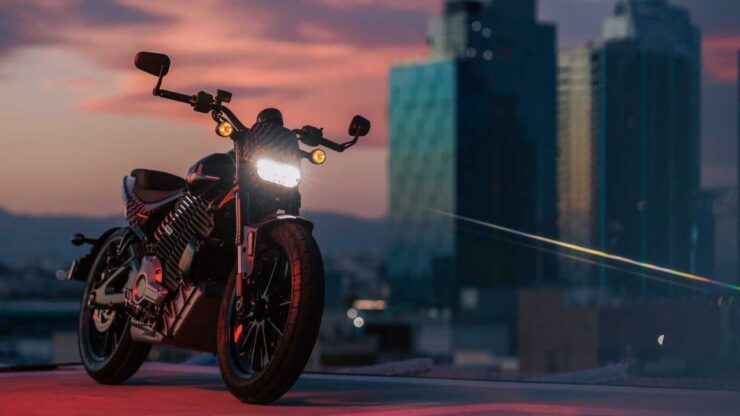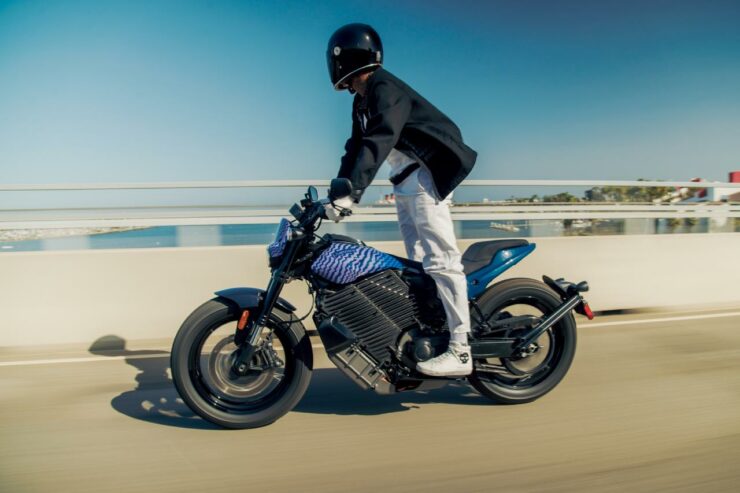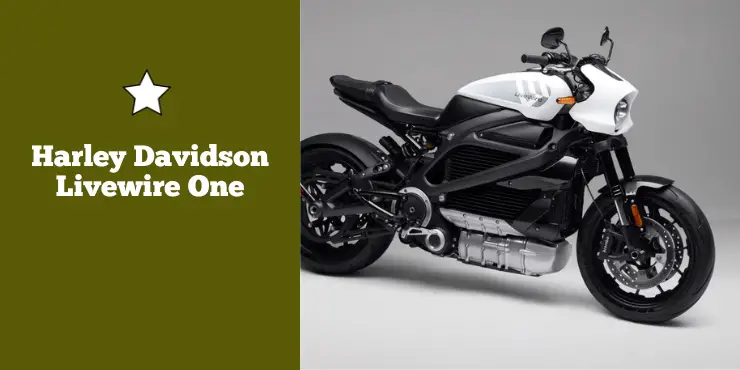When it comes to iconic motorcycles, Harley-Davidson is a name that immediately comes to mind. With a rich history spanning over a century, the brand has consistently delivered powerful and exhilarating rides. In their quest for innovation, Harley-Davidson ventured into the world of electric motorcycles, giving birth to the acclaimed LiveWire series. In this article, we dive into the latest addition to the lineup, the Harley-Davidson LiveWire One. Hang on tight as we explore the design, performance, comfort, features, and overall ride experience of this groundbreaking electric motorcycle. Whether you’re a fan of Harley-Davidson or simply curious about the future of two-wheeled transportation, read on to discover what sets the LiveWire One apart and why it’s generating excitement among riders worldwide.
Harley-Davidson Livewire One – A futuristic powerhouse for the electric segment
The Harley-Davidson Livewire One is a new electric motorcycle from Harley-Davidson. After the subpar sales of the original Livewire, the company turned Livewire into a standalone brand. Further, a new offspring was released, which has many upgrades that set it apart from the parent. The Livewire One is a reworking of the Harley-Davidson Livewire.
The Livewire One is basically a naked electric sportbike. The ergonomics aren’t terribly aggressive but with rearsets and low bars, you may lean slightly forward over the not-a-gas-tank. Meanwhile, the small cowl surrounding the headlight will be all but aesthetic and do little to shield your body. A clearly laid out and highly customizable 4.3-inch LCD screen will serve as the motorcycle’s instrumentation. The ride modes are clearly displayed and can be easily switched.
The motorcycle has plenty of power, stealthily runs through traffic, and is quite easy to handle at the slowest speed because of the lack of traditional transmission and clutch. It will feel easy to be exacting when lane-splitting and without making a racket, you’ll be able to overtake the traffic before the driver even knows you are there. However, you must keep in mind that your silence will make you less visible, so position yourself appropriately.
Harley-Davidson Livewire One Review
If you are looking for an urban motorcycle or a premium commuter, the Harley-Davidson Livewire is tough to beat. Despite being an American brand known for being a traditionalist, Harley-Davidson finally delved into the electric motorcycle segment with the Livewire. The brand then spawned the next electric sportbike dubbed Harley-Davidson Livewire One. If you’re an avid biker who loves riding electric motorcycles and are looking to buy one, then the Livewire One must be on your shortlist. But before you can make your decision, you will want to learn all there is to know about this bike. In this Harley-Davidson Livewire One review, you will get in-depth information about this bike and all it has to offer.
Engine and power
The Harley-Davidson Livewire One is an exciting motorcycle ride and this is due to its high-performance motor. The 84 lb-ft of torque that it has at its disposal is good enough to rival any electric bike in the market. You should remember that its torque is available as soon as you crack the throttle. The motorcycle is far from underpowered as it is essentially a rocketship that has a whir rather than a roar.
Even though it looks identical to the Livewire, there are many changes to the electric powertrain. The output has been lowered a bit, with the Livewire One producing 84 lb-ft of torque at its peak. The original Livewire had 105 HP on offer in comparison to the Livewire One’s 100 HP. Weighing in at 562 pounds, the Livewire One is around 13 pounds heavier than its predecessor.
The 562-pound Harley-Davidson Livewire One is much more agile than what you may possibly expect. The instantaneous and prodigious torque production keeps the Livewire One light on its feet. Diving into corners does not feel ponderous, although you will feel the weight in sequences of S turns. The battery weight has been kept close to the center of gravity, so there aren’t many poor handling traits.
The smooth power delivery of the electric motor greatly helps with handling. You will not realize how much gear changes impact stability and handling until you eliminate them from the riding equation. The consistency of a single-speed transmission will mean that the bike and tire contact patch remains stable. The connected feeling gave me a greater sense of the road and more confidence in the level of traction. This is one of the features that made riding this electric bike in the canyons so much fun.
Meanwhile, Showa takes care of the suspension duties even under the most difficult conditions. Managing this much weight on a sportbike is slightly tricky and needs a stiff setup to prevent wallowing. The suspension feels amazing in the canyons, although it bounces you around if the pavement is not perfect. Occasionally, you’ll hit something unexpected and the result might be jarring. In town, you will feel every bit of road texture, which is not what you want. The adjustments are there for the taking but you cannot change the necessarily taut spring rates.

Performance and ride modes
There are four distinctive power modes that provide considerably different riding experiences. The power modes – Road, Sport, Range, and Rain, determine power output, regenerative motor braking, and throttle response. If you do not like the four presets, you should feel free to adjust the four parameters as per your taste within 1% increments. The four power modes are basically recommendations and starting points. You can personalize each mode fully and precisely.
Selecting between the power modes is quite easy and can be done with the throttle open. The right turn signal switch has a rocker design, which means it doubles down as the power mode switch. You can click on it and the mode will instantly change. Then, you can cycle through the four available modes.
The Sport mode is viciously fast. Twisting the throttle to the stop in this mode will require your full attention. From a standing start, you will be at 60 mph in three seconds flat. While I was not able to measure it, it did happen incredibly quickly. Around 2 seconds later, you will be at 80 mph, and all you need to do is hold on. There are no gears as the clutchless one-speed will keep going faster. Even though the acceleration tapers off slightly over 80 mph, it is still strong into triple digits. While Livewire One claims to have a top speed of 110 mph, I was able to get 115 mph on the 4.3-inch touchscreen TFT dash and the motor did not hesitate along the way.
Despite the throttle of Sport Mode, the throttle response is manageable. At less than full throttle, the power will come on smoothly, although still with a lot of push. If you are in the 10/10ths mood, it will be a blast. At less than that, it is still workable, as long as the input is not ham-fisted. The Sport power delivery does take some time to get used to, but it will still be fun to learn the limits as you go.
If you go into the Road Mode, things will settle down considerably. Throttle response has been noticeably detuned, although still aggressive if you twist the throttle with abandon. Livewire One states that the power has been padded down but you will not feel this as much as the change in throttle response. To make for a more relaxing ride, the regenerate braking will be at a minimum, which means this bike feels almost freewheel with the throttle off. If you start to ride in Road Mode, you should be aware that the braking points for corners will be sooner than in Sport Mode. Although I didn’t overcook a corner in Sport Mode, I did a few times in Road Mode due to the lack of passive rear-wear braking. The foot brake felt great, although I would have wanted to try the One with a left-hand rear brake.
The Range Mode is not dull either. Even though power is down from the Road Mode, the throttle response is essentially the same. In the city or canyons, throttle response will trump overall power, so it moves. Further, the high level of regeneration braking will allow you to brake far later going into corners. It will take a bit of getting used to, as the Livewire One slows down quite quickly if the throttle is not on. When switching between different modes, it is easy to let off the throttle too early in Range Mode. Some riders may feel that they are going faster in the Range Mode than in any other mode. Personally, I would prefer to have maximum power, maximum motor braking, and software throttle response, which is why the Livewire One allows personalization of the power delivery.
The Rain Mode is a lot more fun than it sounds. Even though the Livewire One has minimum power, throttle response, and regeneration braking, it is reasonably quick when you twist the throttle hard. If you are calm with throttle input, it accelerates considerably slower than other modes, and the near freewheel feel-off throttle will prevent the rear wheel from skidding while decelerating. If the road is wet and you have to drive, you must use the Rain Mode.
Technology
I was amused to see Harley use Harley-Davidson Scorcher Sport tires on the bike. The Michelin-made tires essentially have the thankless job of holding traction for an electric sportbike. Fortunately, they are more than up for the job and have an impressive feel. Still, if you are looking to use the Livewire One long term, I would recommend looking into different rubber, although I’m not sure which aftermarket option would best handle the weight and torque of the bike. You need to carry out ample research.
When riding in different modes, cornering-aware traction control is there for stopping the responsive torquey motor from spinning up the Michelin Scorcher Sport. Braking is dependent on the regeneration. Cranking regen to the maximum makes a massive difference in slowing down, although it requires calibrating your perception of when to shut off the throttle Meanwhile, ABS here is standard, non-adjustable, and not intrusive.
Being a high-tech motorcycle, the Harley-Davidson Livewire One is compatible with your Android or iOS phone through Bluetooth or USB. It has the expected phone, media, tuner, and navigation interfaces, alongside voice recognition functions.
When at rest, the Harley-Davidson Livewire One has something known as a haptic heartbeat. According to Livewire One, it adds a touch of humanity to electricity. This is a bit of an oversell. It is a little thump that appears clockwise, instead of offering the comforting irregularity of a heartbeat or engine running. I like it as it reminds me that the bike is armed and ready to go. You wouldn’t want to absent-mindedly twist that throttle at a stop, thinking that the motor is switched off.

Power and availability
The Harley-Davidson Livewire One is a superb ride, with a rather approachable price that will entice any rider looking to enter the world of electric motorcycles. Before making the jump, you must recognize that there are certain limitations of electric motorcycles, primarily weight, recharging time, and range. If these aren’t deal killers and you can work with them, you will be greatly rewarded with an exciting and satisfying experience.
The Harley-Davidson Livewire One has a starting base price of $22,799, which is around $7,000 less than the original Livewire. My expectations for a $22k machine were different from one that is knocking on the door of thirty grand. It will help you carry out your daily tasks quickly and efficiently. The bike will help you explore your neighborhood and whir down your nearest riding road for shots of lean-angle-induced adrenaline.

